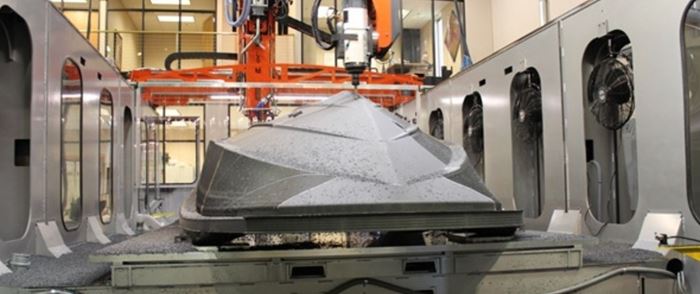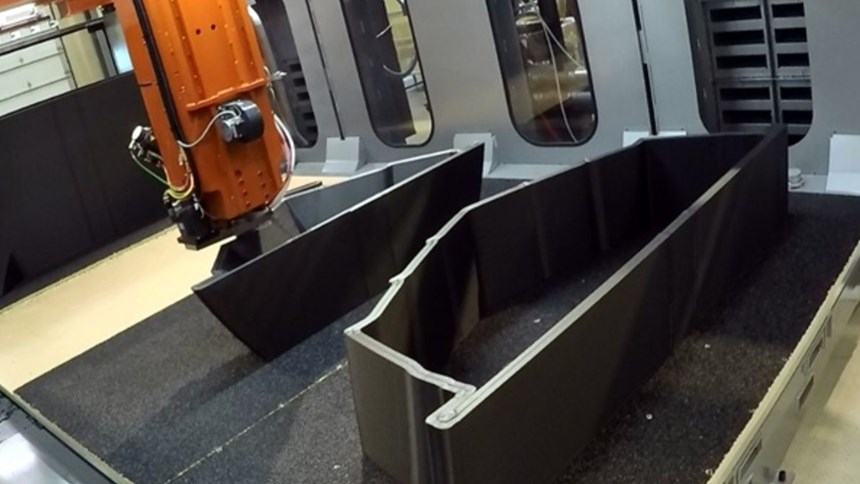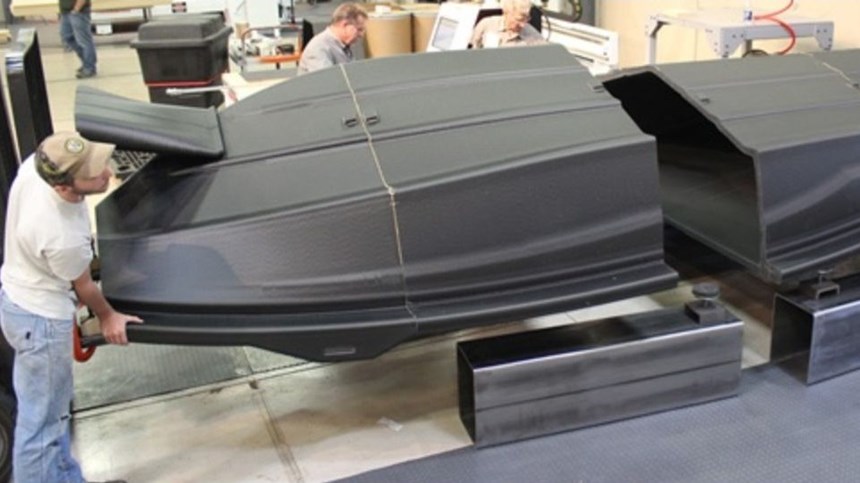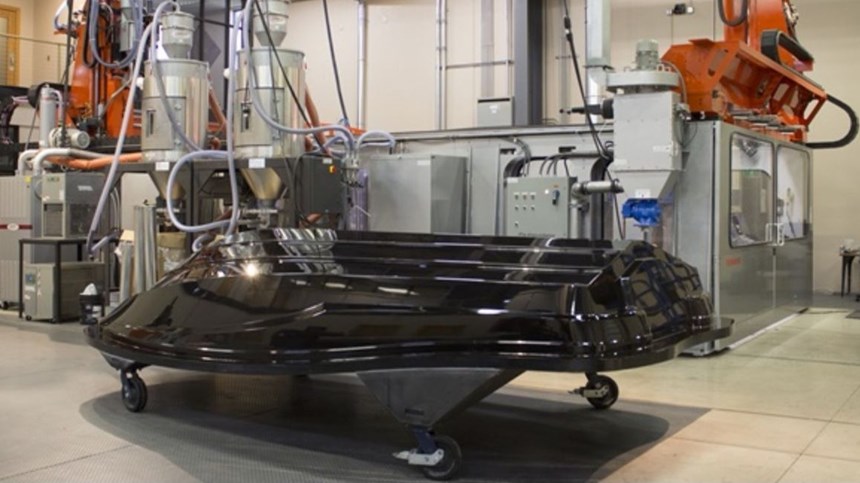Thermwood 3D Prints Large Boat Hull Pattern
Thermwood’s large-scale additive manufacturing (LSAM) technology enabled the fabrication of a 3,000-lb plug for a boat hull mold. The project illustrates how 3D printing could help reduce fabrication costs for marine composites.
CNC and machining specialist Thermwood Corp. has 3D printed a boat hull pattern using a near-net-shape additive manufacturing process. The pattern was then successfully used to produce a production-capable fiberglass mold in a proof-of-concept joint evaluation program.
This achievement was the result of a collaborative effort between Thermwood, masterbatch specialist Techmer PM and mold specialist Marine Concepts/Design Concepts. The tool was printed slightly oversized and then trimmed to final size and shape using Thermwood’s large-scale additive manufacturing (LSAM) system. The LSAM system features two separate gantries, one for printing and one for trimming, for a hybrid manufacturing process.
The pattern was made from Techmer’s Electrafil ABS LT1 3DP, which Thermwood says has proven ideal for marine tooling applications when processed using LSAM print technology. The entire print, assembly and trim process required less than 10 working days to complete. After the printed and trimmed tool was coated and finished, a fiberglass mold was produced using the printed pattern.
The final tool was printed in six sections, including four major center sections with walls approximately 1.5 inches thick, and a solid printed transom and bow. The sections were pinned and bonded together using a Lord Corp. plural component urethane adhesive before being machined as a single piece on the Thermwood system. The final trimmed pattern weighs approximately 3,000 lbs (1,363 kg) and required approximately 30 hours to print and 30 hours to machine.
Thermwood’s demonstration machine, used for this program, has a 10-by-20-foot worktable and features print and trim capability on the same machine. The print head used for this project can print at rates approaching 200 lbs/hr. when running this particular Techmer material. Thermwood also offers larger machines and higher throughput print heads as part of its LSAM product line.
Thermwood says additive manufacturing offers the promise of even more advances in marine tooling, such as the potential to print the hull and deck pattern as a single piece, allowing a production mold to be taken from the hull and then flipping the pattern over and taking a deck mold from the other side of the same pattern. All of these possibilities result in dramatically lower tooling cost and substantially faster build time.
For large boats and yachts, Thermwood is evaluating the feasibility of printing molds directly, rather than printing a pattern from which the mold is taken. Because of their large size, such tools will need to be printed and machined in sections, even with very large LSAM printers. Also, it may also be possible to print integrated cooling channels for air or liquid into these large tools as part of the print process.
This article originally appeared on compositesworld.com.
Related Content
-
How Machining Makes AM Successful for Innovative 3D Manufacturing
Connections between metal 3D printing and CNC machining serve the Indiana manufacturer in many ways. One connection is customer conversations that resemble a machining job shop. Here is a look at a small company that has advanced quickly to become a thriving additive manufacturing part producer.
-
Seurat: Speed Is How AM Competes Against Machining, Casting, Forging
“We don’t ask for DFAM first,” says CEO. A new Boston-area additive manufacturing factory will deliver high-volume metal part production at unit costs beating conventional processes.
-
3D Printing Solutions to Support Investment, Sand Casting
3D Systems is highlighting a design strategy for better investment casting patterns, as well as a new machine suitable for the production of patterns for sand casting.



















